Keyword
ecosystem vulnerability
36 record(s)
Type of resources
Available actions
Topics
Keywords
Contact for the resource
Provided by
Representation types
Update frequencies
Status
Scale
GEMET keywords
-
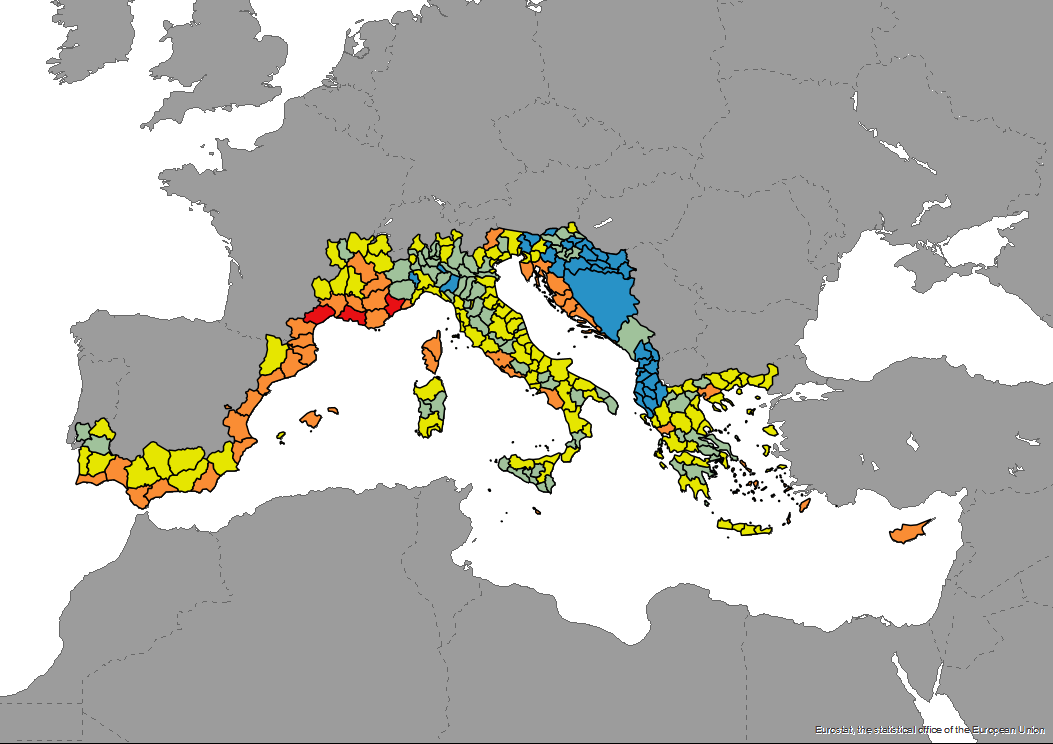
The dataset of the ecological vulnerability to tourism by NUTS3 areas is produced in the framework of DestiMED PLUS. DestiMED PLUS Project builds on the successes of MEET and DestiMED projects and aims to improve levels of integration between regional tourism and conservation policies in the protected areas of 9 Mediterranean Regions through the creation of ecotourism itineraries which are developed using a collaborative approach, both locally and regionally to develop ecotourism.
-
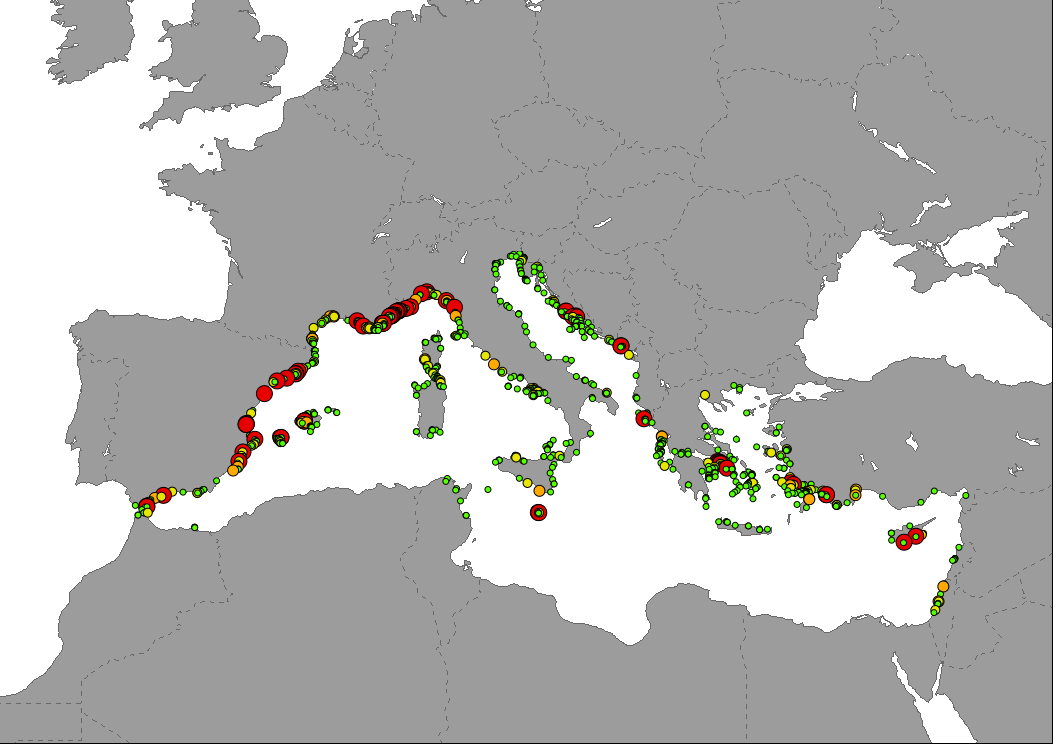
Data representing the cumulative tourism pressure in Mediterranean Sea waters based on the intensity of maritime traffic of passengers vessels and pleasure craft. Traffic intensity was produced using AIS data aggregated at 1km2 by EMODnet and expressed as total time with presence of vessels in each cell throughout the year (hours/km2). Pressure hotspots are highlighted on the map, being classified as: 1) low; areas with cumulative presence of vessels from one hour a day to 4 months (1 quarter); 2) moderate; areas with cumulative presence of vessels between 4 and 8 months (1 to 2 quarters); 3) high, areas with cumulative presence of vessels between 8 months (2 quarters) and one year; 4) very high, areas where there is a cumulative presence of vessels exciding one year, being locations of very high traffic intensity.
-
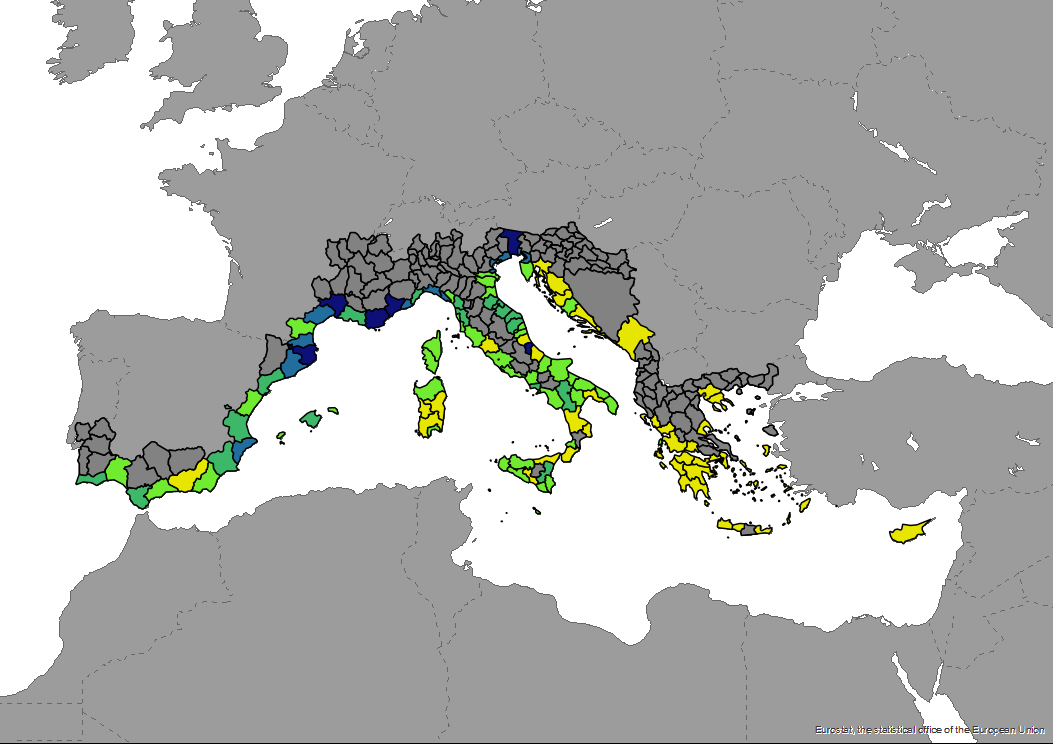
The dataset of the number of moorings in marina ports per kilometre of coastline for each NUTS3 region, based on Portbooker.com, 2022 is produced in the framework of DestiMED PLUS. DestiMED PLUS Project builds on the successes of MEET and DestiMED projects and aims to improve levels of integration between regional tourism and conservation policies in the protected areas of 9 Mediterranean Regions through the creation of ecotourism itineraries which are developed using a collaborative approach, both locally and regionally to develop ecotourism.
-
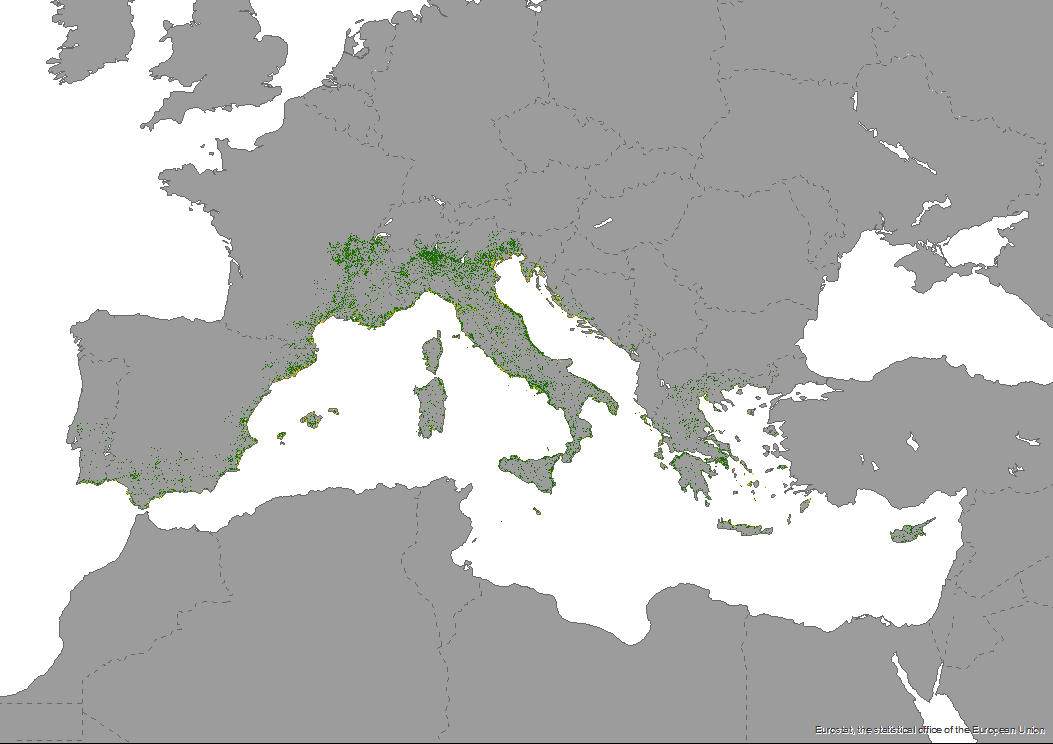
The dataset of the number of bed places in coastal and non-coastal areas per km2, as an indicator of the local intensity of tourism capacity is produced in the framework of DestiMED PLUS. DestiMED PLUS Project builds on the successes of MEET and DestiMED projects and aims to improve levels of integration between regional tourism and conservation policies in the protected areas of 9 Mediterranean Regions through the creation of ecotourism itineraries which are developed using a collaborative approach, both locally and regionally to develop ecotourism.
-
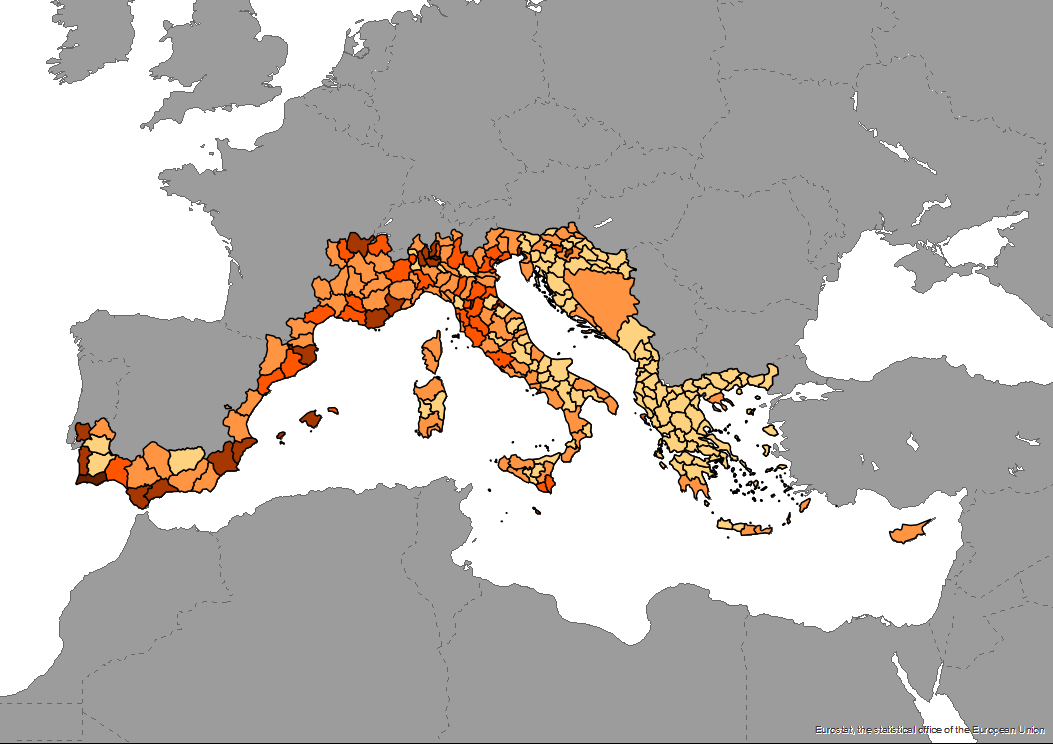
The dataset of the surface percentage occupied by golf courses in NUTS3 as a proxy for the potential environmental pressure of this tourist activity is produced in the framework of DestiMED PLUS. DestiMED PLUS Project builds on the successes of MEET and DestiMED projects and aims to improve levels of integration between regional tourism and conservation policies in the protected areas of 9 Mediterranean Regions through the creation of ecotourism itineraries which are developed using a collaborative approach, both locally and regionally to develop ecotourism.
-

The dataset of the number of nights spent by tourists in coastal and non-coastal areas per km2, as an indicator of the local intensity of tourism capacity is produced in the framework of DestiMED PLUS. DestiMED PLUS Project builds on the successes of MEET and DestiMED projects and aims to improve levels of integration between regional tourism and conservation policies in the protected areas of 9 Mediterranean Regions through the creation of ecotourism itineraries which are developed using a collaborative approach, both locally and regionally to develop ecotourism.
-
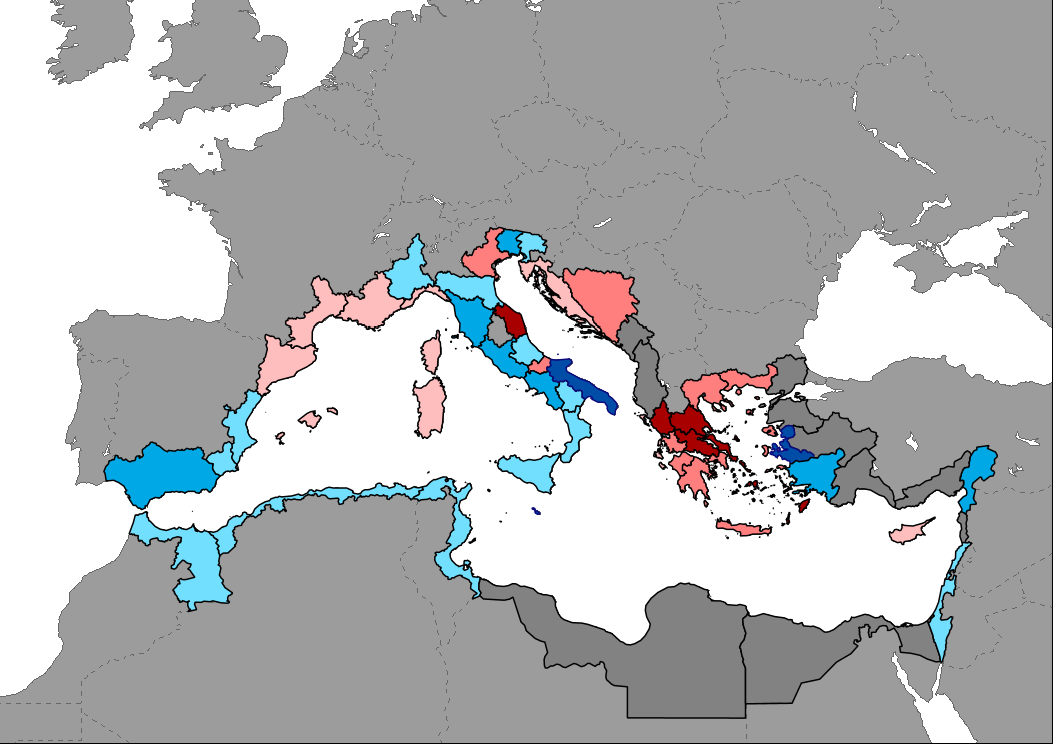
Data shows the change in number of tourism establishments between year 2019 and 2022. Data are mostly available by coastal NUTS2 region. Data for non European Union countries are available at country level, but only coastal regions are shown on the map to highlight them.
-
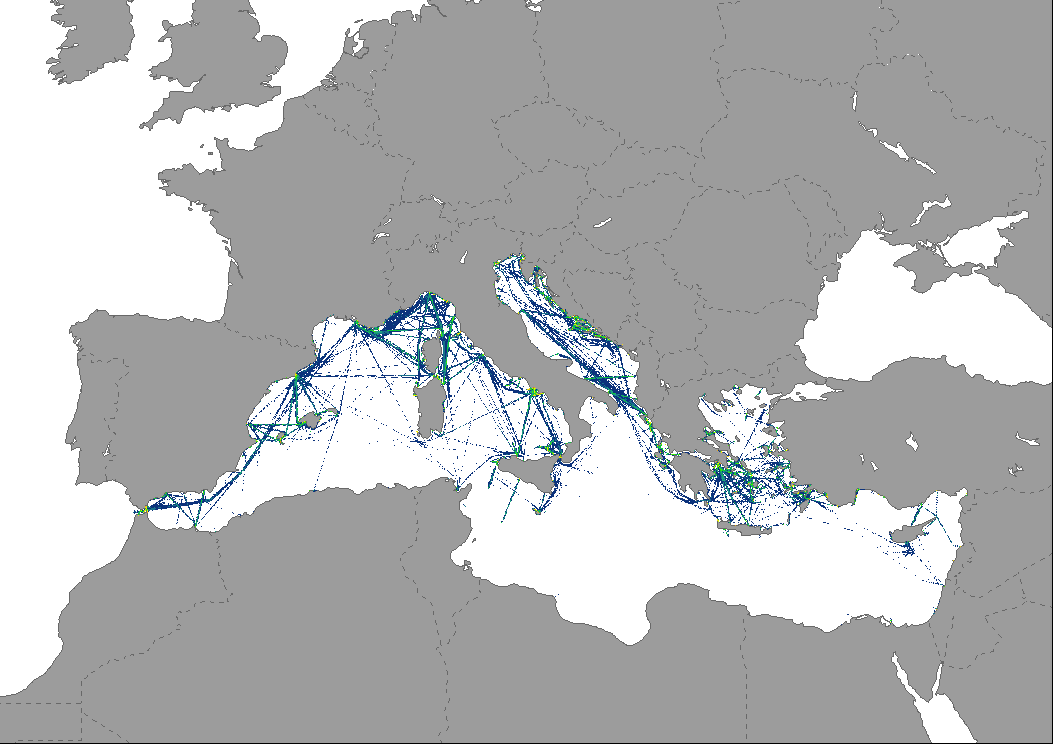
Data represents the degree of pressure based on the intensity of passengers vessels, including high speed craft, in the Mediterranean Sea (year 2022). The map is based on AIS data aggregated at 1km2 by EMODnet and expressed as total time with presence of vessels in each cell throughout the year. The indicator provides an estimate of the amount of pollution vessels produce (via fuel leaks, oil discharge, waste disposal, etc.), under the assumption that traveling ships primarily affect their immediate waters.
-
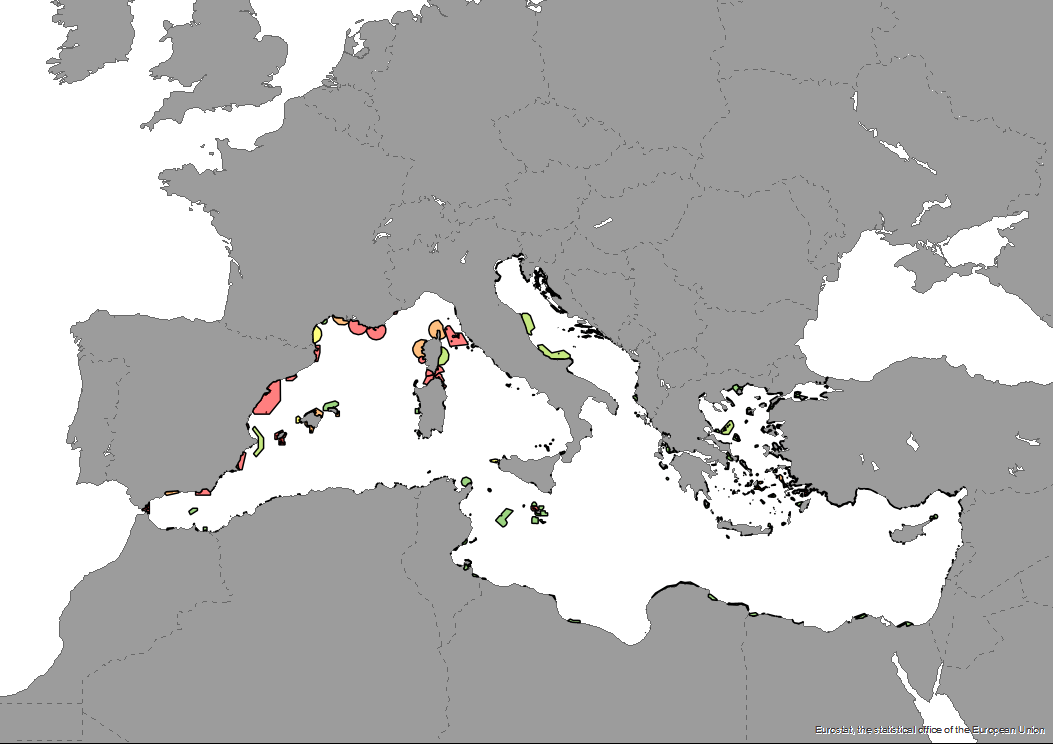
The dataset of the ecological vulnerability of Key Biodiversity Areas (KBAs) based on mean pleasure craft traffic intensity in 2018, expresed as hours per month is produced in the framework of DestiMED PLUS. DestiMED PLUS Project builds on the successes of MEET and DestiMED projects and aims to improve levels of integration between regional tourism and conservation policies in the protected areas of 9 Mediterranean Regions through the creation of ecotourism itineraries which are developed using a collaborative approach, both locally and regionally to develop ecotourism.
-
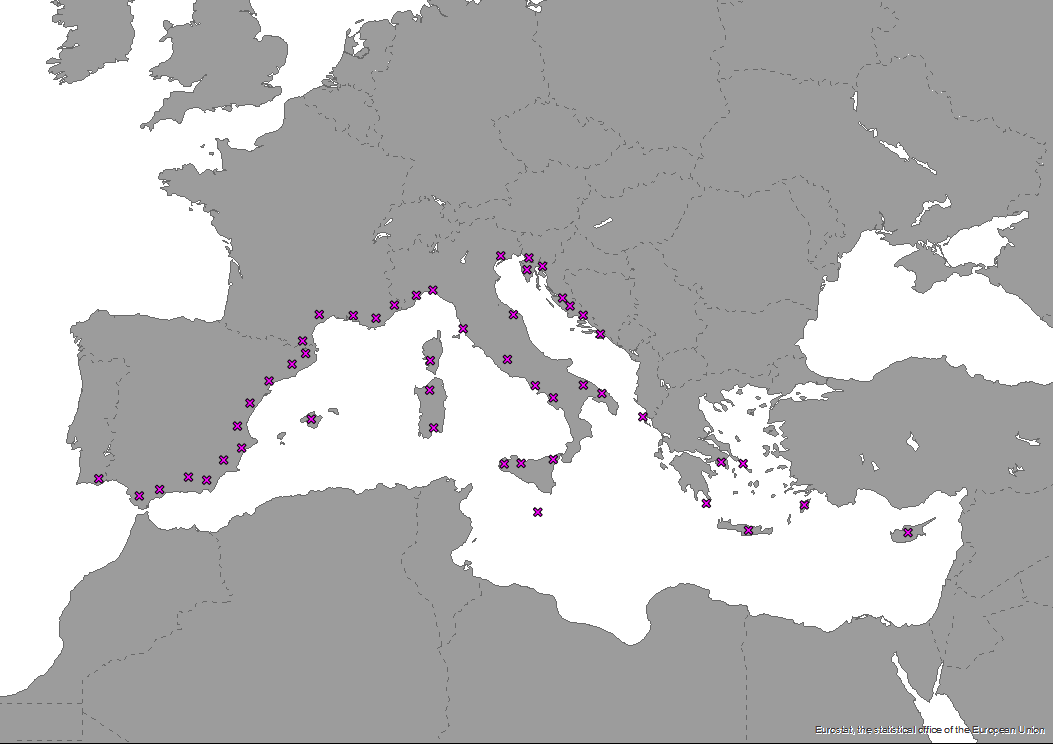
The dataset of The MED cooperation area NUTS3 regions as points is produced in the framework of DestiMED PLUS. DestiMED PLUS Project builds on the successes of MEET and DestiMED projects and aims to improve levels of integration between regional tourism and conservation policies in the protected areas of 9 Mediterranean Regions through the creation of ecotourism itineraries which are developed using a collaborative approach, both locally and regionally to develop ecotourism.
